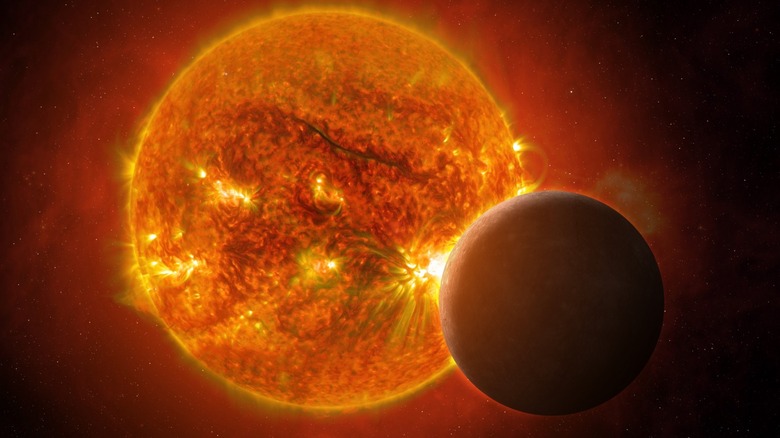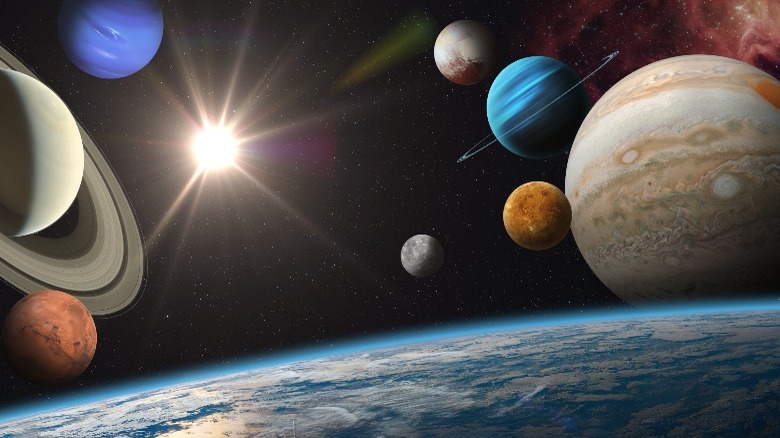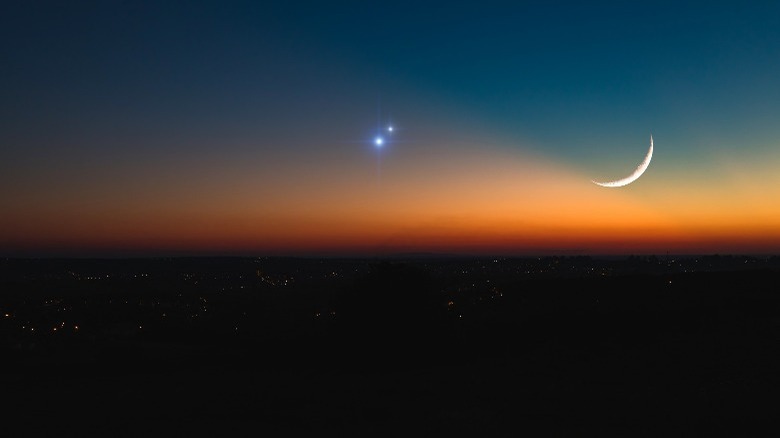What Happens When A Planet Is In Opposition?
Humans have been fascinated by objects in the night sky since ancient times. The sun and the moon have been worshipped as deities in some cultures, while the stars and planets have been consulted when predicting the future. While some earlier civilizations often linked the objects in the solar system to spiritual or cultural beliefs, during the Renaissance and the Scientific Revolution, thoughts shifted more toward scientific study.
In 1510, Nicolaus Copernicus attempted to change how we looked at the stars and planets of our solar system. His planetary system was heliocentric in design, with the planets moving around it in their individual orbits, which differed from the long-accepted theory that the Earth was the center of the solar system (per the National Air and Space Museum). Over time, Copernicus' theory was proved correct, and the planets' paths around the sun have been studied and tracked ever since.
Planets And Their Orbits
The planets of our solar system are not stationary. They all rotate on their own individual axis and make a trip around the sun. Each individual celestial body takes a different amount of time to orbit the sun one time. The closer planets like Mercury and Venus have shorter years, and planets that are further out — like Jupiter and Neptune — have much longer orbits.
As these planets make their trips around the sun, they don't all move at the same speed. This means that at any given time, they are located in different places around the sun. Though they may be on opposite sides of the sun, the planets always stay on their same path and keep roughly their same distance from the sun. However, there is a phenomenon that allows people on Earth to get a better view of certain planets, depending on their locations.
Planets in opposition
Though there are millions of miles that separate the planets in our solar systems, there are times when things align and reveal some great views in the sky above. One of these times is when the outer planets of our solar system are in opposition (or at opposition). According to Royal Museums Greenwich, this happens when at some point in its orbit, Earth is directly in between one of the outer planets and the sun. When this happens, you can see the given planet on Earth on the opposite side of the sky from the setting sun.
So why would a planet in opposition matter? Due to a planet's position in the sky during opposition, it provides up close and clear views of various planets on the outer part of our solar system. They can be seen just above the horizon for hours during the night, providing stargazers an opportunity to see some spectacular sights in the night sky.


